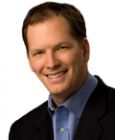Sleep
Power Napping to Win
An interesting contest and getting the most from an afternoon nap.
Posted October 26, 2010
Imagine being able to compete in a race to prove you’re a champion napper.
That is what’s going on in Spain this past week as contestants vie for a first prize of about $1,400 in credit to purchase goods at a shopping mall. The “grand siesta champ” will be chosen by October 23 by the public, and the voting includes the help of the Internet.
The event is quite a scene, with competitors lying down on blue sofas in the middle of a loud, bustling shopping mall as people gaze and the world goes on around them. Not even the surrounding stores close down like they usually do in the afternoon so employees can enjoy their afternoon nap.
Spanish media have given a lot of attention to the championship. And for good reason: the siesta, which has long been a Spanish tradition, is losing its luster. The realities of modern life coupled with a weak economy have conspired to eliminate the afternoon napping session, which can last more than hour. In this competition, sleep is limited to just a 20 minute power nap and people are hooked up to devices that can determine whether or not a person is truly sleeping. A doctor attaches pulse meters to contestants’ chests so the judge, sitting in a lifeguard-type chair overlooking the five sofas, can tell who is sleeping and who isn’t.
The complex rules award points based on how long a person sleeps during the 20-minute competition time. Extra points are awarded to those who sleep in unusual positions and those who don eye-catching pajamas. The kicker: lots of extra points are given to those who snore!
According to some reports, Spaniards are woefully sleep-deprived. The fact that Spain boasts an unemployment rate of 20 percent may just have something to do with this significant lack of sleep, along with the loss of the siesta.
But will a siesta competition change the growing movement away from the once coveted afternoon nap? Unfortunately, probably not.
In the United States, napping has never been a cultural fixture despite all the studies proving its health benefits. You shouldn’t need a sleeping competition to encourage you to nap. A nap can be the quickest way to reboot your tired brain in the afternoon, charge yourself up for the rest of the day, and help you refresh yourself down to the cellular level. And you don’t need a blue couch in a busy mall to do it. You can try this one at home (or maybe even the office):
- 8 and 30: Aim to take a nap 8 hours after your wake time, but no later than 3:30 p.m. (otherwise your nap could disrupt your ability to fall asleep that night, especially if you’re early to bed). Set aside 30 minutes, since it may take you 10 minutes to fall asleep (if you feel asleep much faster you are likely sleep deprived and you really need a nap), which leaves 20 minutes for the power nap. Use an alarm clock.
- Get comfortable: Shake off your shoes, recline on a couch or bed (if available), or in a chair. Turn off or dim the lights, or use an eye mask to block distracting light. Get a blanket to stay warm.
- Don’t get uncomfortable: The thought of taking a nap in the middle of the day, especially a busy work day, might sound crazy to some (like friends and co-workers). Get over it! Remember, some of the most celebrated and productive (and smart and creative and innovative) people in history were huge nappers.
- Nap safely: Only nap in a safe environment.
If anyone gives you a hard time catching a few winks in the afternoon, just tell them that you’re working on your brain power. And that they, too, could use the brain boost if they’re acting so misinformed. They need mental space for the facts about napping!
Sweet Dreams,
Michael J. Breus, PhD
The Sleep Doctor™


